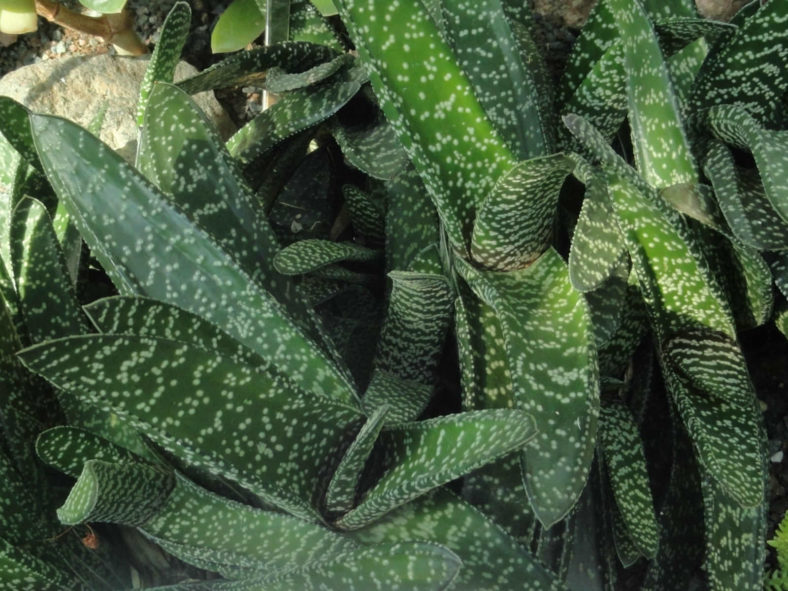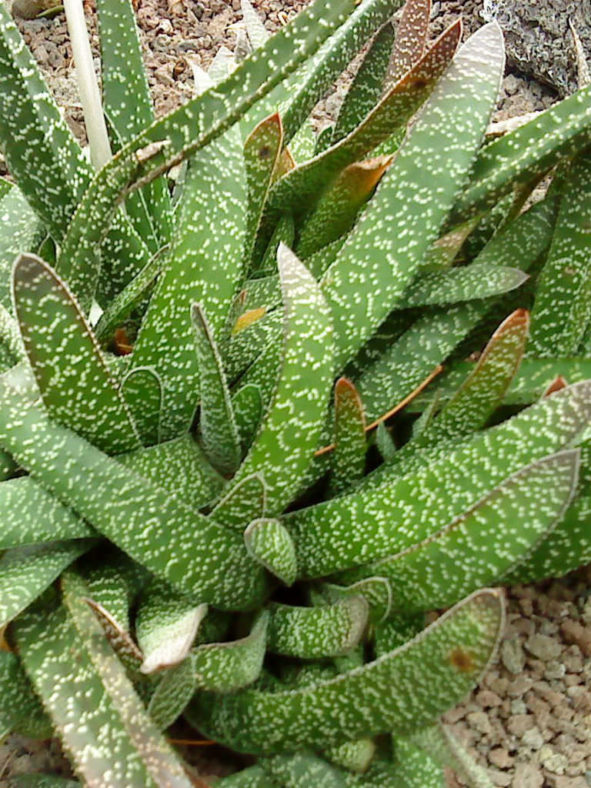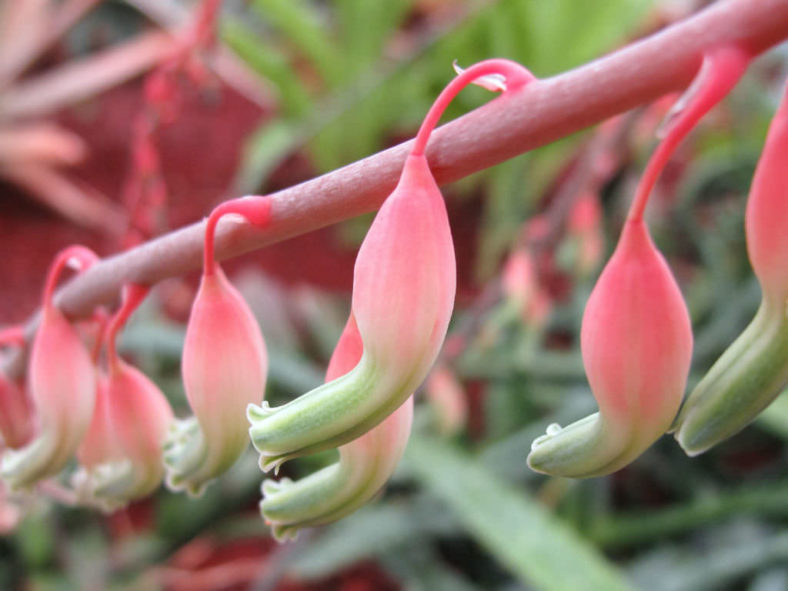Scientific Name
Gasteria carinata (Mill.) Duval
Common Name(s)
Bredasdorp Gasteria, Keeled Gasteria, Keeled Ox Tongue
Synonym(s)
Aloe angulata, Aloe carinata, Gasteria angulata, Gasteria bijliae, Gasteria parvifolia
Scientific Classification
Family: Asphodelaceae
Subfamily: Asphodeloideae
Tribe: Aloeae
Genus: Gasteria
Etymology
The specific epithet "carinata" (pronounced "kar-IN-uh-tuh") means "shaped like a keel; having a keel-shaped ridge; carinate" and refers to the leaves of this species, which usually have keels in mature plants.
Origin
The native range of Gasteria carinata is from Bredasdorp to the Great Brak River in the Western Cape, South Africa. It occurs in dry river valleys, on shale banks, and outcrops in the shade of xerophytic shrubs, together with other succulent species.
Description
Gasteria carinata is a stemless succulent with dark green leaves spotted with white domed, raised or immersed tubercles arranged in obscure transverse bands. It grows up to 7.2 inches (18 cm) tall, producing offsets from the base to form small clusters. The leaves are usually spirally arranged or rarely in two opposite vertical rows. They are triangular to triangular-lanceolate, with sharp points at the tips, channeled on their upper surface, measuring up to 7.2 inches (18 cm) in length and 2 inches (5 cm) in width. Juvenile and adult leaves always have a similar texture.
The flowers are white to light pink with central green stripes and can reach a length of up to 1.6 inches (4 cm). They appear on spreading and slightly curved, racemose inflorescences in winter and spring. The inflorescences can grow up to 3 feet (90 cm) long.
Gasteria carinata is the most variable in the genus, and it isn't easy to define clearly.
Varieties, Forms, and Hybrids

Hardiness
USDA hardiness zone 9b to 11b: from 25°F (-3.9°C) to 50°F (10°C).
How to Grow and Care
These plants are often grouped with Haworthias because they have similar cultural requirements. Both are attractive, small succulents that can tolerate somewhat more shade than many succulents, making them more suitable as houseplants.
Gasterias are susceptible to fungal infections, which usually appear as black spots on the leaves. These result from too much humidity or water on the leaves, but they should not spread too quickly. They have a natural defense mechanism against such fungal attacks, which attack the invading organism and seal off the wounded spot. In general, any place where Haworthia and Aloe thrive will be hospitable to a Gasteria.
These succulents are small, shallow-rooted, and relatively slow-growing. Therefore, they are often grown in small clusters in wide, shallow dishes. Over time, clusters will naturally enlarge as the mother plant sends off small plantlets.
See more at How to Grow and Care for Gasteria.
Links
- Back to genus Gasteria
- Succupedia: Browse succulents by Scientific Name, Common Name, Genus, Family, USDA Hardiness Zone, Origin, or cacti by Genus
Photo Gallery
Click on a photo to see a larger version.

